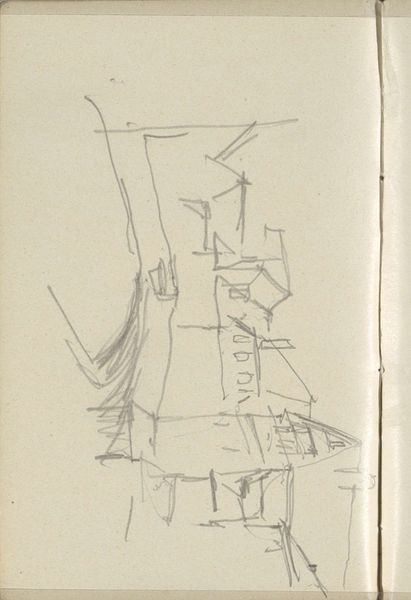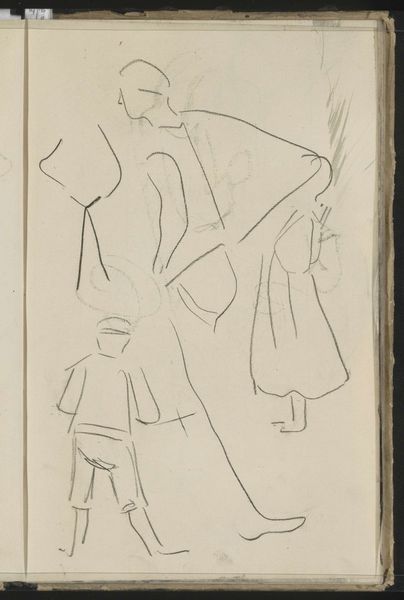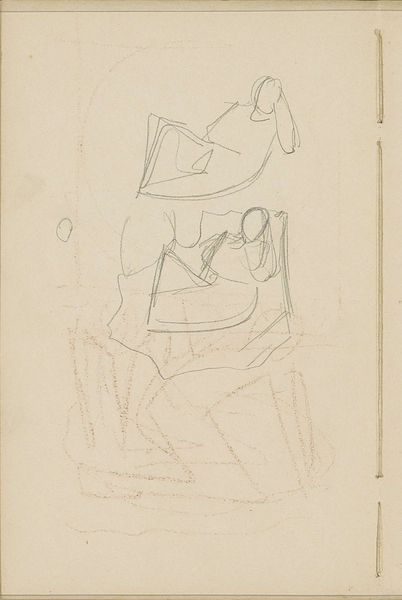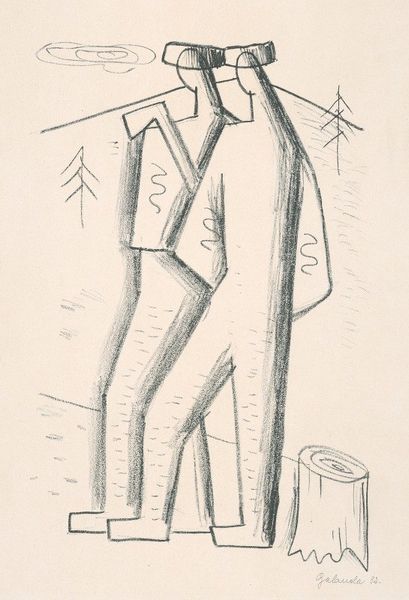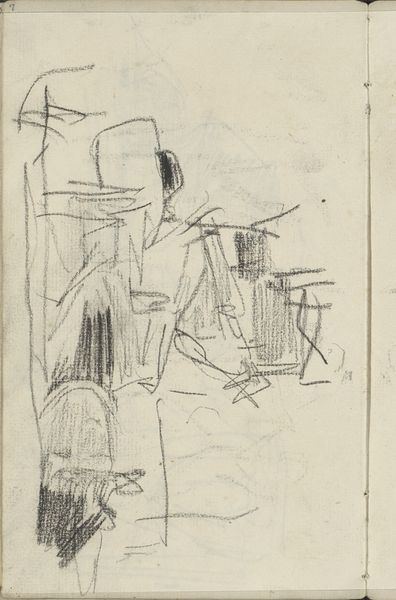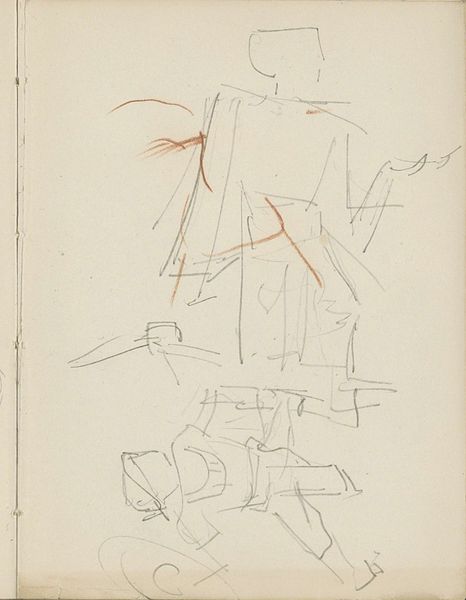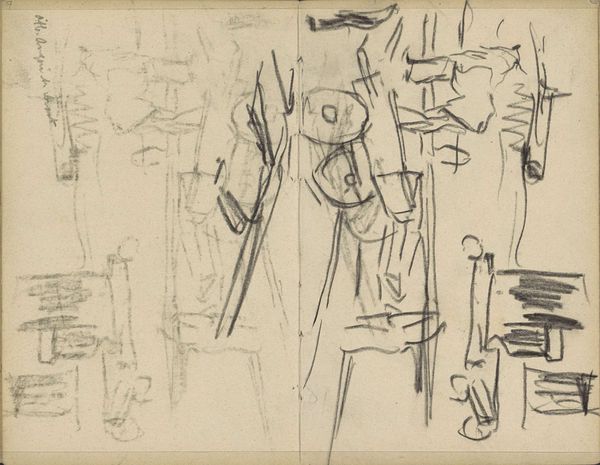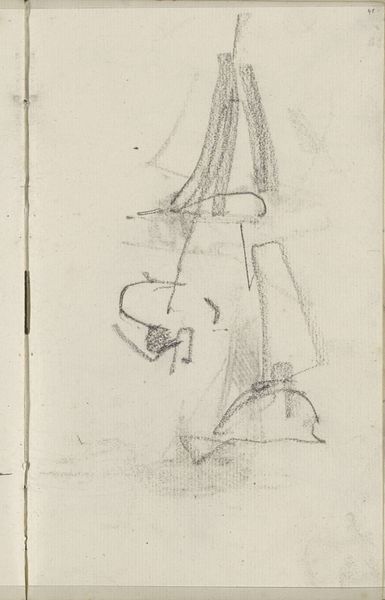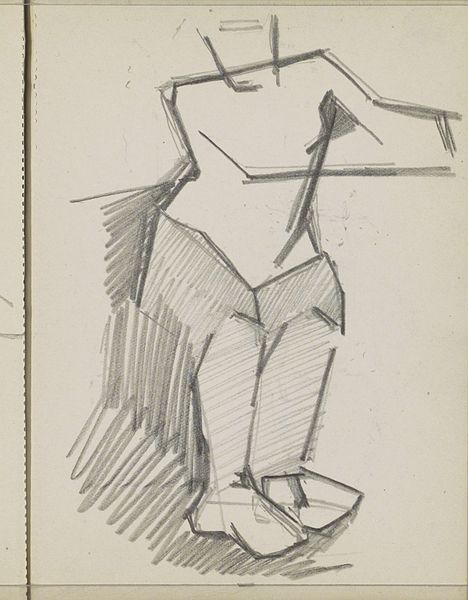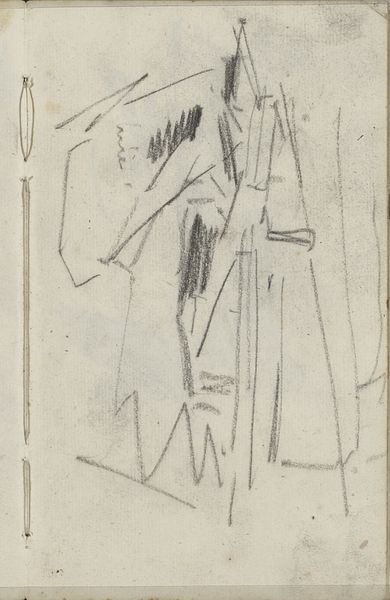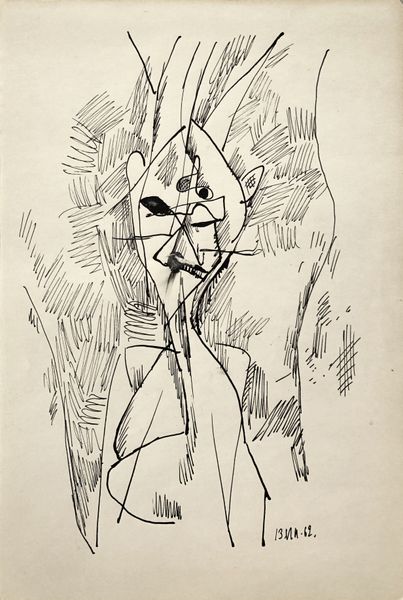
drawing, graphite
drawing
landscape
figuration
abstract
geometric
abstraction
graphite
modernism
Copyright: Public Domain: Artvee
Editor: This is Mikuláš Galanda’s graphite drawing "Bača," created between 1932 and 1933. It’s… intriguing. The geometric shapes suggest a figure and a landscape, but it's all so abstracted. What do you see in this piece? Curator: I see a deliberate attempt to grapple with Slovak identity during a period of intense political and cultural negotiation. Galanda, deeply engaged with modernism, pulls from folk traditions while consciously dismantling the romantic nationalism often associated with rural life. Editor: Dismantling? How so? Curator: Look at the "bača," the shepherd. Instead of a sentimental depiction of rural innocence, he's rendered through stark geometric forms. There's an underlying critique of the idealization of the peasant class and its instrumentalization by dominant political forces. The sharp lines and lack of detail reject the notion of an unspoiled, authentic folk. How does that geometric lens make you think differently about the figure? Editor: I guess it removes some of the inherent assumptions. You can’t just project an idea onto it; it's almost like he's claiming ownership over how he is viewed. It seems like a reclamation of cultural narrative. Curator: Precisely. Galanda uses abstraction not as an escape from reality, but as a tool to deconstruct it, to question the very foundations upon which cultural narratives are built. And by employing elements of folk tradition in a non-traditional style, Galanda fosters discussion of these critical narratives and conversations in Slovak society. Editor: That really gives me a different perspective. I initially saw abstraction, but now I see active disruption and interrogation. Curator: Art is rarely just "art." It's a dialogue, a disruption, a mirror reflecting and refracting the complexities of its time. Seeing art through various lenses—visual, historical, theoretical—is how we find greater understanding. Editor: This makes me want to analyze other seemingly simple artworks in a similar way. It encourages such critical thought.
Comments
No comments
Be the first to comment and join the conversation on the ultimate creative platform.

